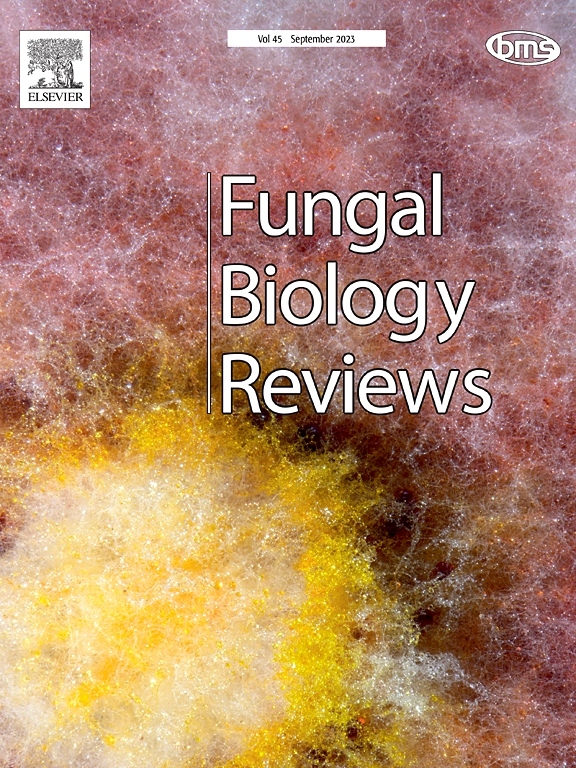与Epichloë“共同生活”-探索真菌共生网络中非植物伙伴的意义
IF 4.6
2区 生物学
Q1 MYCOLOGY
引用次数: 0
摘要
草和Epichloë真菌之间的关系是复杂和多方面的。此外,其他共生伙伴也参与了这些相互作用,并可能影响草真菌的关联。本文综述了Epichloë的共生伙伴,并将真菌Clonostachys epichloë作为一种新的、以前未被考虑的共生网络元素进行了分析。Clonostachys epichloë真菌最初被认为是Epichloë的一种支寄生虫。进一步的研究表明,它除了具有真菌寄生活性外,还对参与Epichloë性循环的植物蝇具有昆虫致病活性,并且可以在感染Epichloë内生菌的草籽表面定殖,进一步调节grass-Epichloë的相互作用。分析相互作用网络的整体方法是至关重要的,因为天然的支寄生虫C. epichloë可以用来限制Epichloë真菌引起的草的窒息病。通过检查C. epichloë对所有相互作用要素的影响,以及它对这些要素之间关系的影响,我们可以有效地评估其作为Epichloë生物防治剂的有效性。本文章由计算机程序翻译,如有差异,请以英文原文为准。
“Living together” with Epichloë – Exploring the significance of non-plant partners in the fungal symbiotic network
The relationships between grasses and Epichloë fungi are complex and multifaceted. Moreover, additional symbiotic partners are involved in these interactions and can influence grass-fungi associations. In this article, the symbiotic partners of Epichloë are reviewed, with the mycoparasitic fungus Clonostachys epichloë analyzed as a novel, previously unconsidered element of the symbiotic network.
Clonostachys epichloë fungus was first recognized as a mycoparasite of Epichloë. Further studies revealed that, in addition to its mycoparasitic activity, it also has entomopathogenic activity toward Botanophila flies involved in the sexual cycle of the Epichloë and can colonize the surface of grass seeds infected with the Epichloë endophyte, further modulating the grass-Epichloë interaction.
The holistic approach to analyzing interaction networks is crucial because the natural mycoparasite C. epichloë may be used to limit choke disease in grasses caused by Epichloë fungi. By examining the effects of C. epichloë on all elements of the interaction, as well as its impact on the relationships among these elements, we can effectively assess its usefulness as biocontrol agent of Epichloë.
求助全文
通过发布文献求助,成功后即可免费获取论文全文。
去求助
来源期刊

Fungal Biology Reviews
MYCOLOGY-
CiteScore
10.60
自引率
0.00%
发文量
36
期刊介绍:
Fungal Biology Reviews is an international reviews journal, owned by the British Mycological Society. Its objective is to provide a forum for high quality review articles within fungal biology. It covers all fields of fungal biology, whether fundamental or applied, including fungal diversity, ecology, evolution, physiology and ecophysiology, biochemistry, genetics and molecular biology, cell biology, interactions (symbiosis, pathogenesis etc), environmental aspects, biotechnology and taxonomy. It considers aspects of all organisms historically or recently recognized as fungi, including lichen-fungi, microsporidia, oomycetes, slime moulds, stramenopiles, and yeasts.
 求助内容:
求助内容: 应助结果提醒方式:
应助结果提醒方式:


